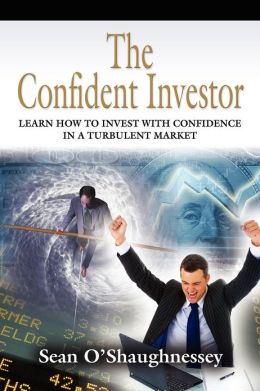My book “The Confident Investor” is now available wherever books are sold
I am very happy to announce that my book The Confident Investor is now available for sale in paperback or ebook format. You should be able to buy it wherever books are sold. There is also a 2 chapter preview available in PDF format in case your local bookstore doesn’t have the book on the shelf and you want to browse.

- You can find the paperback, Nook, iPad, and Kindle version here. Since this site has all of the available formats, I will primarily link to this store when I refer to my book.
- You can find the paperback and the Kindle version on Amazon here.
- You can find the paperback and the Nook version on Barnes and Noble here.
- You can find the iPad version on the Apple Store here.
Now that the book is published, this site will change slightly. I will still publish reviews of companies on a regular basis for all to read. I will also publish commentaries for all to read. However, I will now publish some information that simply doesn’t make sense unless you have read my book. In those situations, I am actually providing more free content for the people that have purchased my book. As I explained in the book, content costs money in a book format while my site is basically free no matter how much content I put on it. Therefore, to reduce the page count of the book and keep the cost down, I am moving some valuable content to the site for the enjoyment of only the readers of the book. It is free to register to see this enhanced content if you own the book.
If you decided in January 2006 to invest $10,000 in Apple, you would have increased your profit an ADDITIONAL 10.8% by using the techniques taught in my book. That is an additional $10,100 in 6+ years to be added to your savings account! To achieve this amazing return, you would have invested in Apple using the techniques in my book rather than using a simple “Buy and Hold” strategy.
In the same 6+ year period, you would have INCREASED YOUR EARNINGS by 42% if you would have used the techniques of this book for an investment in Google!
Every hard worker that is saving for retirement or a college fund should read my book, The Confident Investor.
You work hard at your job and try to invest money for retirement. When you look at your investment returns, you don’t see your money growing very quickly. Many people have lost money in the stock market over the past couple years. My book teaches you how to find great companies and profitably invest in those companies.
The combination of technical analysis with data analysis and key financial metrics results in tools to buy stocks at the appropriate time in extremely well-run companies. The result is the Decennary Time Weighted Average (DTWA), Time Weighted Composite Average (TWCA) and the Confident Investor Rating (CIR).
This book is not a Get Rich Quick scheme. There is no fast and easy way to build wealth by doing ANYTHING legal. My book explains a proven system to identify great companies, purchase stock at a discount in those companies, and accelerate wealth-building over time.